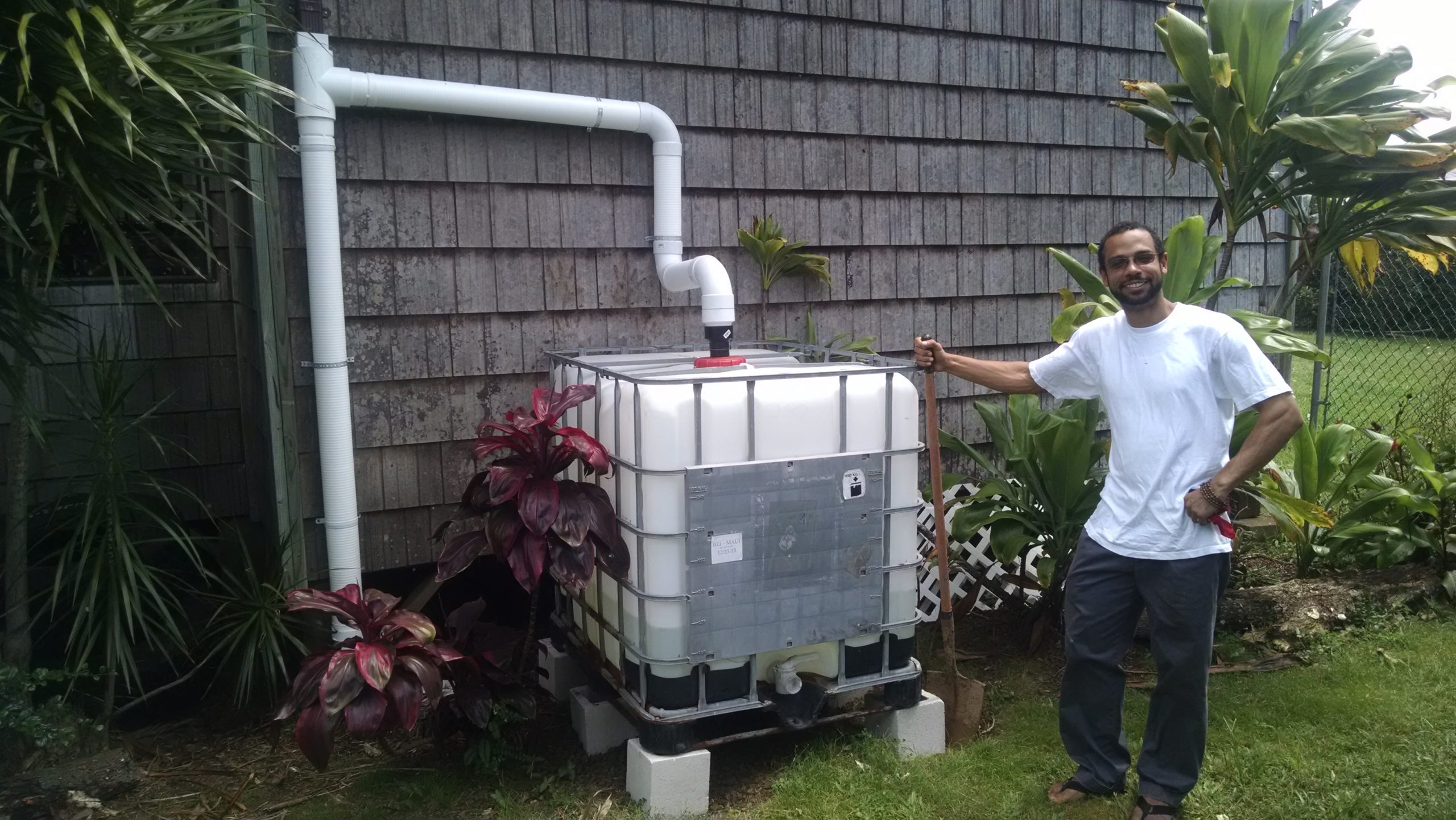
Going back to school is always hard. Back to homework, waking up early and sitting in a classroom all day. But imagine going back to school and learning about real local issues, and then learning real life skills and using them to solve actual problems in your community. That’s what students in Mr. Ryan Duffy’s class went back to this year. Mr. Duffy teaches sixth through eighth grade math and science at ROOTS school in Haiku on Maui, Hawaiʻi. Last October he came to CORAL’s Bay Watershed Education and Training (B-WET) workshop and learned how to teach his students about the importance of watersheds in a way that’s fun and exciting.
He’s applying those skills, and his students are completely engaged! Soon after the workshop, Mr. Duffy’s students started designing a system to capture rain water off their school’s rooftop. They collected data to determine the average rainfall for their region, and measured the surface area of the school’s roof. They compiled this information to calculate the amount of rain they could catch and researched various rain water harvesting systems. They even built a first flush diverter to prevent the polluted water from the beginning of a rain event—and all the debris it brings off the roof—from entering the water catchment tanks.
By spring, the students had completed their data collection and calculations and were ready to install their water catchment tanks. Hawaiian Commercial & Sugar Company donated two 500-gallon water catchment tanks, and CORAL’s Program Manager, Wes Crile, and Mr. Duffy helped install them. The school is now able to divert about 1,000 gallons of rainwater from entering the ocean at nearby Hoʻokipa Beach each time it rains. Hoʻokipa isn’t too far from the world-famous surf spot, Jaws, and it’s a popular place for windsurfing and kite surfing. Preventing rainwater from entering the ocean there not only helps protect human health, but also helps protect coral reefs.
The students will continue the project this year by measuring the rainwater catchment system and its impacts. They will also start monitoring water quality at Hoʻokipa beach and learn about the impacts that sediment and rainwater runoff have on the coral reefs. Soon they’ll start to see how their school project fits into the health of the entire watershed.
A special thanks to the National Oceanic and Atmospheric Administration (NOAA) as well as the Atherton Family Foundation for their generous support of this project.
